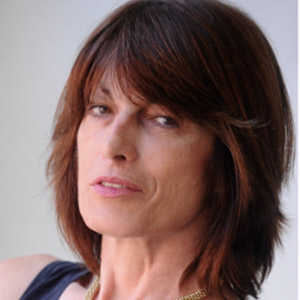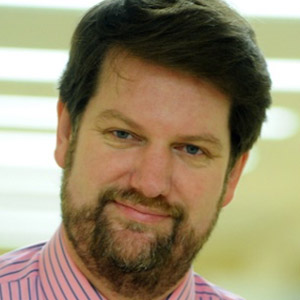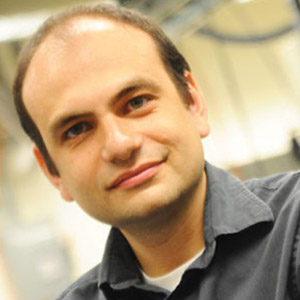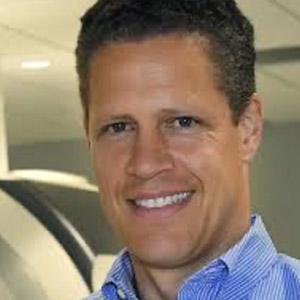Acceleration Fund Recipients 2018-2020
At the conclusion of their two years of acceleration funding, these faculty members have made great progress in their collaborative, innovative research projects. Below, please find a report on each group’s project.
Project 1: Regeneration of Acutely Injured Human Lungs for Transplantation
Summary
Our goal is to increase the pool of donor lungs for transplantation, which is the only definitive treatment for patients with end-stage lung disease, by recovering the acutely injured lungs. Gas exchange in these rejected lungs needs to be improved by just 10 to 20 percent and the injury is largely located in the airway; blood supply is critical for lung survival and function. We went on to develop a highly innovative, imaging-based technology for targeted cell therapy of the injured regions of the lung, while preserving intact lung vasculature and surrounding lung tissue.
Principal Investigators

Gordana Vunjak-Novakovic is University Professor, the highest academic rank at Columbia University and the first engineer at Columbia to receive this distinction. She is also the Mikati Foundation Professor of Biomedical Engineering and Medicine, and a faculty in the Department of Medicine and the College of Dental Medicine. The focus of her lab is on engineering functional human tissues for use in regenerative medicine, studies of development and disease, and patient-specific “organs-on-a-chip” platforms. She is highly published (3 books, over 410 journal articles) and cited (over 49,000 citations, h=126), and has mentored over 150 trainees (graduate students, postdocs, clinical fellows and junior faculty). With the members of her laboratory, she launched four start-up companies. She was elected to the Academia Europaea, Serbian Academy of Arts and Sciences, the National Academy of Engineering, the National Academy of Medicine, the National Academy of Inventors, and the American Academy of Arts and Sciences.
Project 2: Wearable Optical Brassiere for Breast Cancer Therapy Monitoring
Summary
The overall goal of this proposal is to develop a brassiere that contains source and detectors for monitoring the effects of breast cancer treatment during neoadjuvant chemotherapy. The project, which also received Blavatnik Acceleration Fund support, builds on expertise and previous efforts in the Hielscher and Kymissis laboratories. Their team also includes Dr. Dawn Hershman from Columbia’s Departments of Medicine, Division of Hematology/Oncology, and Prof. Theanne Spiros, assistant professor at New York Fashion Institute of Technology.
Principal Investigators

Andreas Hielscher previously worked as a postdoctoral fellow at Los Alamos National Laboratory and was on the faculty at the State University of New York Downstate Medical Center. Most recently, he directed Columbia’s Biophotonics and Optical Radiology Laboratory, which works towards establishing optical tomography as a viable biomedical imaging modality. To this end, Hielscher’s team worked on developing state-of-the-art imaging hardware and software that provide 3-D distributions of physiologically relevant parameters in biomedical systems. The work of the laboratory is supported, among others, by the National Institute of Arthritis and Musculoskeletal and Skin Diseases, the National Institute of Biomedical Imaging and Bioengineering, the National Cancer Institute, and the New York State Foundation for Science, Technology and Innovation. He holds a BS from the University of Hannover (Germany), 1987; MS, University of Hannover, 1991; PhD, Rice University, 1995.

Ioannis Kymissis joined the Electrical Engineering faculty in 2006. He teaches courses in solid state devices and display technology. He obtained his SB, MEng and PhD degrees from MIT, and also participated in a cooperative program through which he completed his M.Eng. thesis at IBM Research. He also held a postdoctoral appointment at MIT and worked as a consulting engineer at QDVision before joining Columbia. Prof. Kymissis's research focuses on the fabrication, characterization, and applications of thin film electronics, with a particular focus in the applications of organic semiconductors and recrystallized silicon devices. In addition to his teaching and research work, he also serves as the Editor-in-Chief of the Journal of the Society for Information Display.
Project 3: Integrated Multi-Coil B0 and Radio-Frequency Technology for 1H Magnetic Resonance Spectroscopy of Cervical Spine Pathology in Multiple Sclerosis
Summary
The aim is to establish the biomedical analysis of the human spinal cord with in vivo magnetic resonance spectroscopy to investigate the pathological processes early in the development of MS disability and find diagnostic biomarkers for early identification and guided treatment.
Principal Investigators

Christoph Juchem received a MS (Diplom) in physics from the University of Bonn in 2001 and a PhD (Dr. rer. nat.) in physics from the University of Tübingen in 2006. Juchem has more than 15 years of experience in developing and conducting magnetic resonance experiments in animal models and humans, and has authored more than 30 scientific publications, book chapters and patents. He is a Clinical and Translational Science Award (CTSA) scholar and has been a finalist of the I.I. Rabi Young Investigator Award of the International Society for Magnetic Resonance in Medicine (ISMRM). Christoph served as Chair of the ISMRM’s MR Engineering Study Group, journal reviewer for more than 15 peer-reviewed scientific journals (including Magnetic Resonance in Medicine Distinguished Reviewer in 2014/2016), and grant reviewer for 4 national research societies. In 2016, he joined Columbia from Yale University, where he successfully pursued clinical MRI/MRS research as Assistant Professor (2012-2016) and served as Co-Director of the 7 Tesla Brain MR Spectroscopy Core. At Columbia, he teaches Principles of Magnetic Resonance Imaging in the Department of Biomedical Engineering.

J. Thomas "Tommy" Vaughan, Jr. joined Columbia as Director of Magnetic Resonance Research in 2016 to launch a new university-wide initiative to develop and apply MR methods and technologies to advance biomedical research and clinical diagnostics. He is a leading pioneer in MR and its utility for science and medicine. Vaughan was recruited from the University of Minnesota where he held the Quist-Henline Chair in Biomedical Research and was Director of Engineering at the Center of Magnetic Resonance Research, with appointments in Radiology, Biomedical Engineering, and Electrical Engineering. Vaughan has enjoyed a thirty-year career in academic research at UT Southwestern, U. Alabama Birmingham, Massachusetts General Hospital and Harvard, and U. Minnesota. In addition to the research centers he’s helped to found and build at these institutions, his achievements are recorded in 120 articles, a number of books and chapters, and 45 patents. Thomas Vaughan is a Fellow in IEEE and ISMRM societies, on the editorial board of NMR in Biomedicine, active in the NIH and journal peer review, and CTO of two small biotech businesses, including one, MR Safe Devices, LLC.
